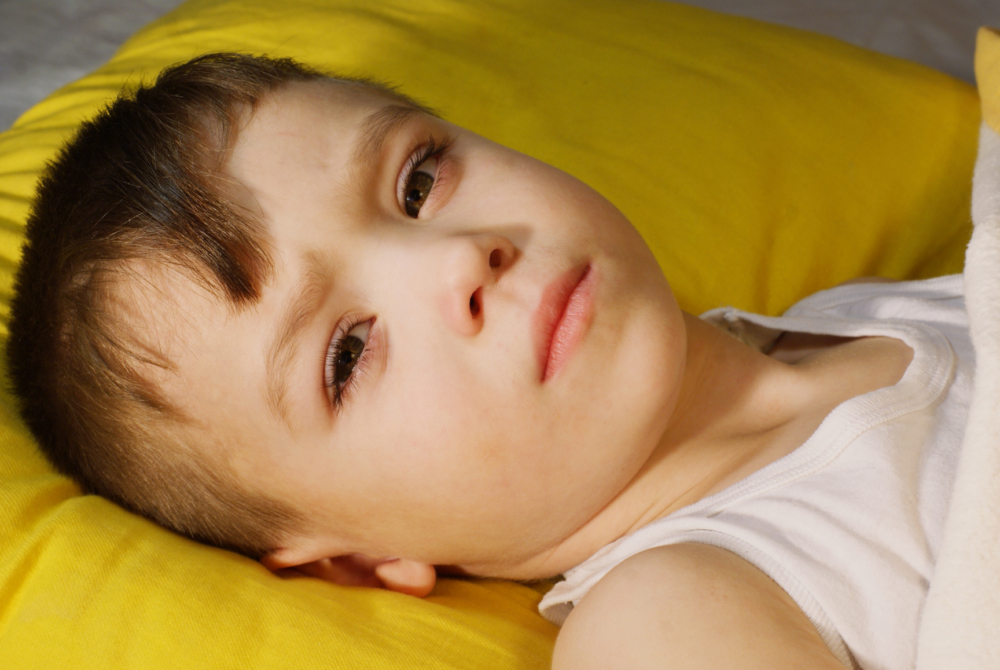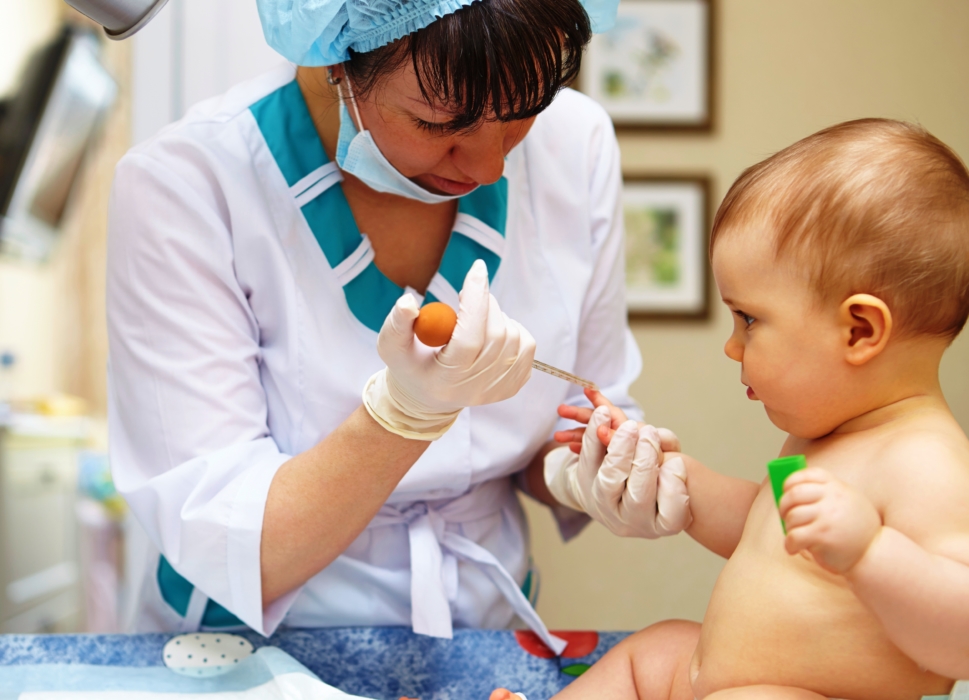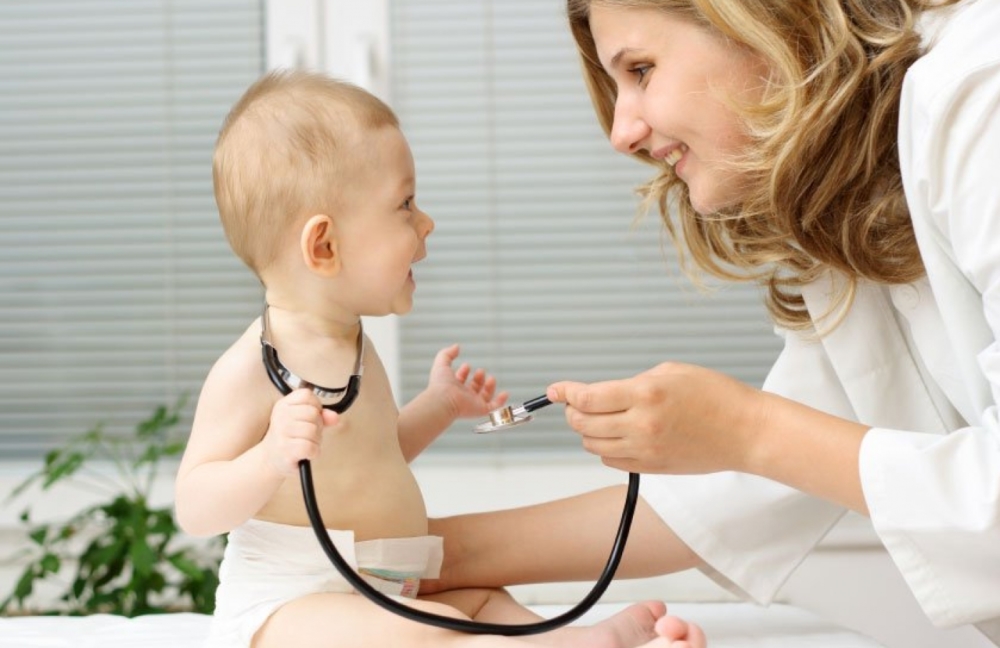Anemia in children (anemia in another way) is a serious ailment that affects the general condition of the child. Manifested by weakness, frequent dizziness, the patient's skin acquires a pale shade. Symptoms of the disease arise due to a decrease in hemoglobin, a decrease in the level of red bodies. Anemia manifests itself in different forms: advanced anemia becomes a serious lifelong disease, a cause of impaired functioning of other organs. To understand how dangerous this disease is for babies and whether it is worth fearing, you need to know its main symptoms.
Material Content:
Causes of anemia in children
Iron deficiency anemia in children occurs for a number of the following reasons.
- Antennal. The origin of the disease occurs in the earliest (intrauterine) period. The woman’s body is by inheritance obligated to transfer to the fetus a sufficient supply of the necessary iron. The intensity of iron transmission during childbearing falls at 28-32 weeks of gestation. During this period, the mother is obliged to protect herself from a number of infectious diseases, to consume a sufficient amount of iron-containing products - apples, veal, buckwheat, drink freshly squeezed juices, and take vitamins. At the same time, according to a pregnant woman’s blood test, her hemoglobin should not be less than 120 units. Premature birth, multiple pregnancy, maternal anemia, bad habits of women and unbalanced nutrition can be the root causes of the development of anemia in infants.
- Intranatal. The reasons are directly related to the moment of the birth process itself. Iron deficiency is manifested due to the loss of a huge amount of blood.Premature detachment of the placenta, late ligation of the umbilical cord, the first cause of blood loss, followed by the development of anemia.
- Postnatal. Manifest shortly after birth.
In the latter case, several groups can be distinguished:
- endogenous:
➢ bone marrow failure;
➢ damage to the production of red blood cells;
➢ anomalies with hemoglobin synthesis;
➢ hemolytic anemia. - exogenous:
➢ Mom's mono-diet (lean mother's milk);
➢ early feeding (products are not digested due to lack of necessary enzymes);
➢ poor-quality adapted mixtures with artificial feeding;
➢ late feeding;
➢ non-observance of the daily regimen, physical exhaustion of the baby;
➢ imbalance of iron intake-consumption (this substance is consumed more than is produced by the body).
Children with systemic diseases and severe pathologies are at risk. Here are some of them:
- frequent nosebleeds;
- food allergy;
- atopic dermatitis;
- hemophilia;
- rickets;
- lactase deficiency.
The presence of a chronic disease or infection can cause anemia, as a secondary disease. These major diseases include:
- tuberculosis;
- leukemia;
- mycosis;
- worms;
- rheumatoid arthritis;
- pyelonephritis;
- bronchiectasis.
In the presence of systemic diseases, it is imperative to pass a general blood test in order to verify the presence or absence of anemia in a sick child.
Types of disease
Various forms of manifestation of anemia are divided into groups:
- posthemorrhagic pathology - due to the loss of blood in a child not only acute, but also chronic;
- anemia due to a violation of hematopoiesis - iron deficiency is observed at the genetic level, against the background of a defect in the functioning of porphyrins, a lack of vitamin B12;
- hemolytic anemia - the destruction of red blood cells, blood formation does not keep pace with the process of hemorrhage, which leads to improper hematopoiesis.
Symptoms and clinical presentation
Symptoms of anemia in children on the face. Different signs of the disease manifest their own characteristics:
- Easy flow. Children are always lethargic, experiencing constant drowsiness, fatigue. The skin of the face is paler than that of peers, the cheeks are peeling. The nails are fragile, the hair grows poorly. A distinctive symptom is the "transparency" of the earlobes, dizziness.
- Complicated form. Characteristic cracks appear on the palms and soles of the feet. In the corners of the mouth ulcers, gusts are constantly formed. Marked mucus on the gums, increased salivation. The desire to play disappears immediately, as soon as patients go outside, they quickly get tired. Subject to frequent diseases of viral infections, pneumonia.
Low hemoglobin causes patients to experience hypoxia. Against this background, fatigue is observed. Sleep is often superficial. Many children are mentally unbalanced and require considerable attention. Suffer for enuresis. The manifestation of arterial hypotension, fainting is noted. Diarrhea or constipation are common, appetite is constantly absent. The liver, as a blood-forming organ, is constantly enlarged.
Nome of hemoglobin in the blood of children:
- up to 5 years - 125-135 g / l;
- over 5 - 120 g / l.
Of course, with anemia, this indicator does not correspond to normal values.
Diagnosis, which doctor will contact
It is possible to determine a pathological disease associated with hematopoiesis using laboratory tests.
A general blood test for anemia will look like this:
- Hb (hemoglobin) - below 125 g / l;
- Er (red blood cells) - less than 12 / l.
The severity of the main indicators determines the severity of anemia:
- Hb 90-110 g / l (Er up to 3.5) - a light phase;
- 70-90 g / l and up to 2.5, respectively - average;
- 50-70 g / l, up to 2 - heavy.
A pediatrician issues a referral for diagnosis.After receiving the result, the attending physician will certainly force the parents to be examined by doctors of a narrow medical focus - a gastroenterologist, a hematologist.
Note. If there is "jaundice" in the infant, it is worth taking anemia test immediately.
Treatment of anemia in a child
The treatment of anemia depends on the cause of its occurrence. Adhering to the doctor’s recommendations and the treatment regimen, you can defeat the ailment in the shortest possible time.
For treatment you will need:
- a properly organized regime of the day - daytime and at least 8 hours of night sleep;
- a balanced diet with a high iron content - eggs, vegetables, beef, nuts, liver, buckwheat, beans, seafood, vegetables;
- the use of freshly squeezed natural juices from apples and beets;
- medicines prescribed by specialists, pediatrician - preparations with iron, multivitamins;
- walks in the open air;
- gymnastics and massage.
Note. Recovery will take from 6 to 10 weeks.
Prevention
A low level of hemoglobin during the growth period of children with a timely diagnosis and proper treatment is fully corrected.
Prevention of the development of anemia begins from the moment the child is planned. A woman should lead a healthy lifestyle, eat well, in order to exclude iron deficiency in her baby in the future. Normally, from a healthy mother, the fetus receives a normal dose of iron for the first six months of her life, before the introduction of complementary foods. After that, the mother is obliged to monitor the nutrition of the growing baby, enter into his diet all the necessary products, in particular containing iron.
- Stomatitis medicine for adults and children: remedies for treating mouth ulcers at home

















